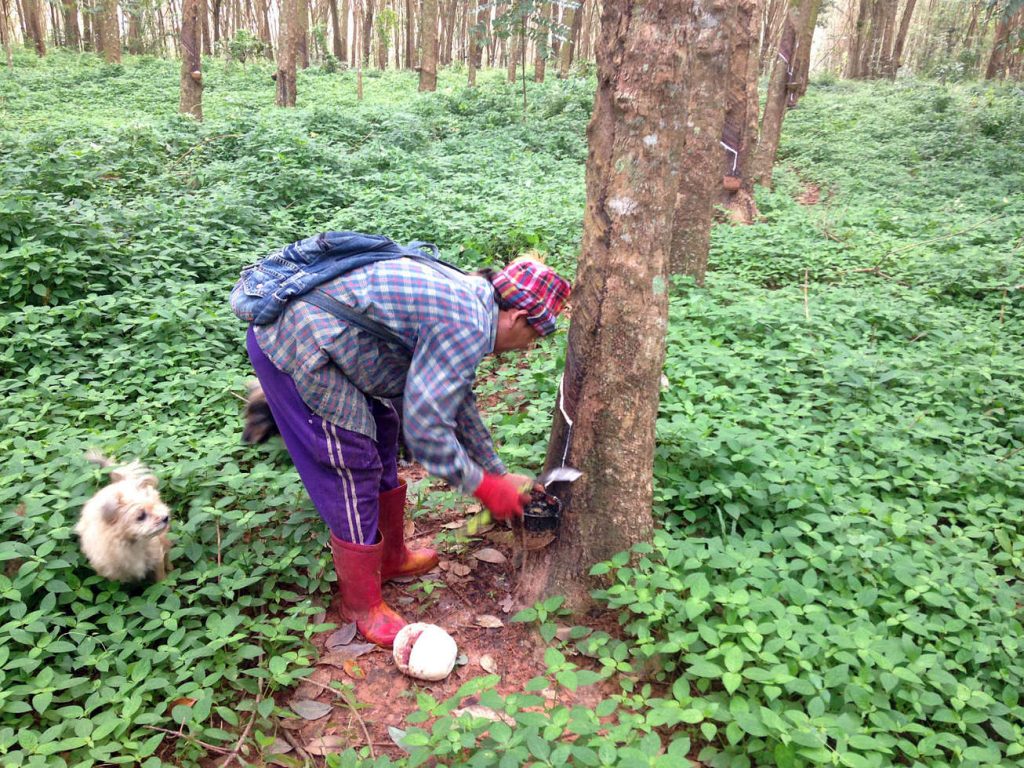ラオスにおける野生ランの利用と自生環境 /薬用・観賞用としての着生ランの保全を目的として
対象とする問題の概要 ラン科植物は中国では古くから糖尿病や高血圧等に効く薬用植物として珍重されているほか、ラオスやタイ、ベトナムをはじめとし、世界的に様々な品種が愛好家によって交配され、高値で取引されることもある。このような様々な需要が存…

The Thai Government established rubber smallholder cooperatives in the 1990s when many smallholders suffered under the rubber price crisis. The government provided smokehouses and other facilities to the established cooperatives for processing latex into ribbed smoked sheets. My previous research suggested that the cooperatives in Chumphon could help rubber smallholders to increase their income. However, at present, only about 5% of smallholders are members of smallholder cooperatives. There is still a large knowledge gap concerning issues for non-members.
Therefore, this study aims to focus on farmers who are not members of cooperatives in a more systemic way. I selected one village where there are currently no cooperatives. Data were collected through interviews with 90 non-member rubber smallholders in Chumphon province, Thailand.
To investigate the current situation of non-member rubber smallholders in the production, processing, and marketing of rubber and family labor allocation.

Approximately 70% of smallholders had rubber planting land of less than 20 rai (3.2 ha). Most of the households’ heads were women (52%). The average age of households’ heads was 50 years. The main tapping system is a half-spiral (S/2) downward cut with a tapping frequency of two days followed by one day of tapping rest in three days (2d/3). More than half of rubber producing households tapped rubber trees on their own in order to save tapping costs. Most of the smallholders sold their rubber products as cup lump (72%), followed by latex (17%), and unsmoked rubber sheet (11%). Although the price of cup lump was relatively lower than other rubber products, it was popular among smallholders because of the advantage of saving labor and time.
The average labor force of rubber smallholder households was 2.37 family laborers. Rubber smallholders allocated 1.58 family laborers (67%) to rubber production and 0.79 (33%) to other work. In terms of the family labor allocation to other work, rubber smallholders allocated 0.22, 0.36, and 0.21 family laborers to non-rubber agriculture (28%), non-farm work (46%), and work outside as migrants (27%), respectively. This data suggests that rubber farmers still allocated a large proportion of family labor to rubber production in order to save labor costs. However, one-third of family labor was allocated to the non-rubber sector to secure family income under conditions of low rubber prices.
To date, I have studied the current situation of rubber smallholders only in traditional rubber planting areas. However, to understand the situation of rubber smallholders in Thailand as a whole, future research will examine the situation of rubber smallholders and the role of rubber cooperatives in new rubber planting areas such as northeast Thailand.
Copyright © 附属次世代型アジア・アフリカ教育研究センター All Rights Reserved.